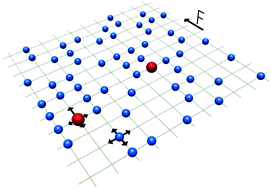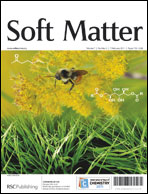Bias- and bath-mediated pairing of particles driven through a quiescent medium
Abstract
A particle driven by an external force in a molecular crowding environment—a quiescent bath of other particles, makes their spatial distribution inhomogeneous: the bath particles accumulate in front of the biased particle (BP) and are depleted behind. In fact, a BP travels together with the inhomogeneity it creates. A natural question is what will happen with two BPs when they appear sufficiently close to each other such that the inhomogeneities around each of them start to interfere? In quest for the answer we examine here, via Monte Carlo simulations, the dynamics of two BPs in a lattice gas of bath particles. We observe that for a sufficiently dense medium, surprisingly, both BPs spend most of the time together which signifies that the interference of the microstructural inhomogeneities results in effectively attractive interactions between them. Such statistical pairing of BPs minimizes the size of the inhomogeneity and hence reduces the frictional drag force exerted on the BPs by the medium. As a result, in some configurations the center-of-mass of a pair of BPs propagates faster than a single isolated BP. These jamming-induced forces are very different from fundamental physical interactions, exist only in presence of an external force, and require the presence of a quiescent bath to mediate the interactions between the driven particles.


 Please wait while we load your content...
Please wait while we load your content...